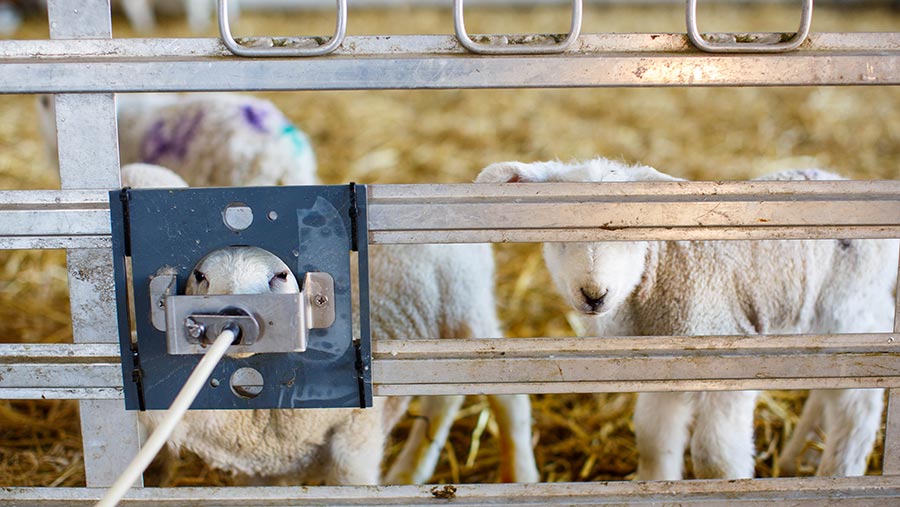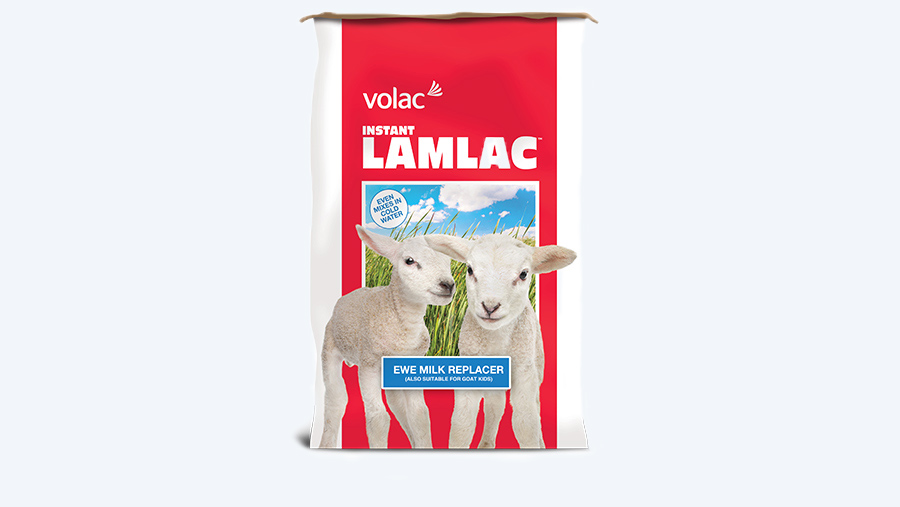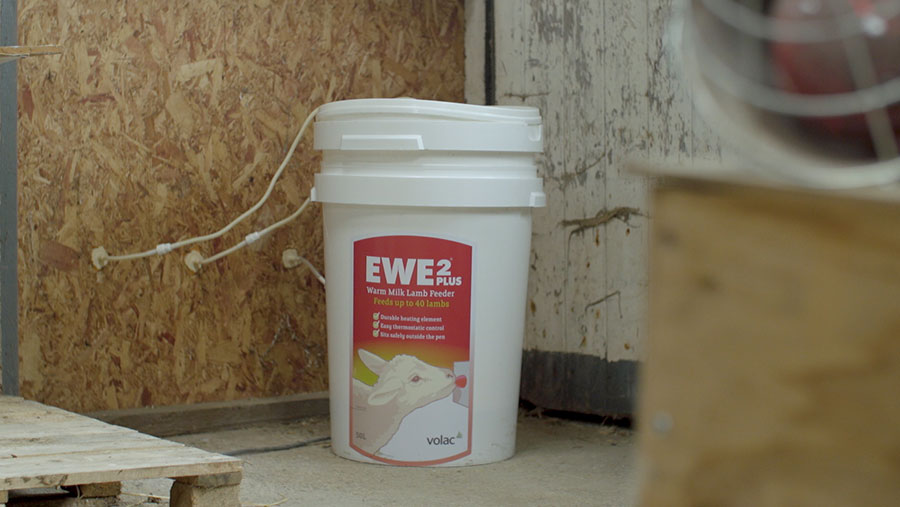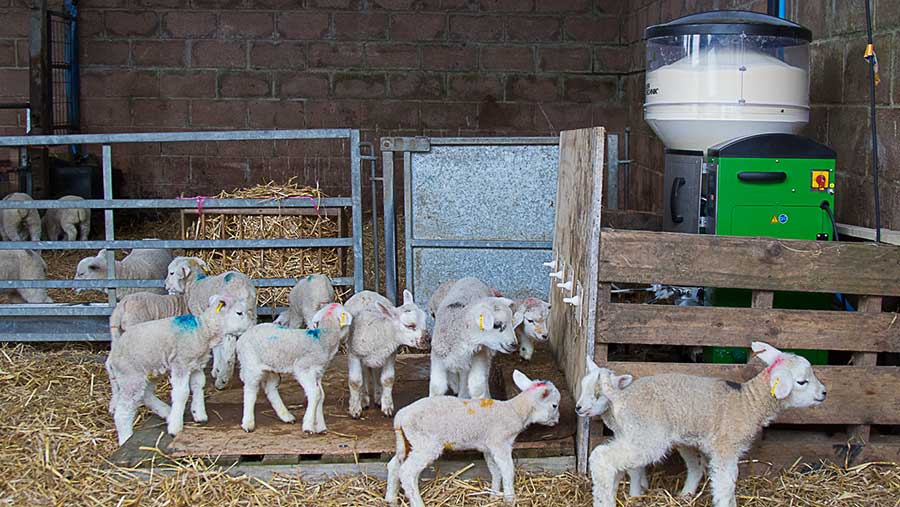Advertiser content
How to profit from your surplus lambs in 2023
With UK lamb prices expected to mirror the trend of the last couple of years and remain firm into 2023 due to low domestic supply against solid demand within the EU, sheep industry commentators believe it will pay farmers to rear as many healthy lambs as possible come lambing time.
Stacey Bruna from Volac says that each year every flock will have some lambs that either need to be adopted onto another ewe or be reared off another mother.
But deciding which rearing route to take will depend on the availability of a suitable foster mother and the physical condition of the lamb.

© Volac International Limited
“Cross-fostering will only be successful if the lamb is fit and healthy, has had adequate colostrum, and is fostered onto a healthy ewe with plenty of milk and good maternal instincts,” she explains.
“However, surplus lambs can be reared very effectively and without all the inherent practical problems of fostering onto an unwilling ewe.
“With good husbandry, organisation and Lamlac ewe milk replacer, there’s no doubt you can produce good quality lambs to sell in 2023 alongside those reared on any ewe, as well as save hours of effort and hassle.”

© Volac International Limited
How to rear surplus lambs:
- Choose your feeding system. There are three main options available: bottle feeding, which is very time consuming; or a variety of labour-saving options – for example, ad-lib feeding of surplus lambs via a thermostatically controlled milk bucket feeder (such as the Volac Ewe2) or machine feeding using a computerised feeder. The method you choose will often depend on the number of lambs you are rearing and the facilities that you have available.
- Ensure all newborn lambs receive adequate colostrum within six hours of birth.
- Choose a proven, high-quality ewe milk replacer. According to the most recent Volac surplus lamb rearing survey (Dec 2021), 95% of sheep farmers say it is important to see positive independent feeding trial data highlighting the performance of proprietary ewe milk replacer products. For example, specially formulated, trial-proven ewe milk replacer such as Lamlac can be mixed cold and is designed to be a complete diet providing the lamb with all the energy and nutrients it needs. Indeed, two recent independent rearing studies have confirmed that both small numbers and large groups of surplus lambs can be reared highly successfully on Lamlac. The trial work, conducted at Harper Adams University (HAU) and Reaseheath College during the spring of 2021, highlights the potential to increase the number of lambs reared from flocks with a high prolificacy rate.
Feeding enough Lamlac alongside fresh water, roughage and small amounts of a good quality creep feed refreshed daily is the key to healthy, profitable growth. When using Lamlac, it really is as easy as one, two, three:
To rear a surplus lamb effectively, simply feed 10kg of Lamlac (across the milk feeding period) mixed with water at the rate of 200g per litre; and then wean the lamb abruptly when it reaches 35 days of age.

© Volac International Limited
Ad-lib feeding of surplus lambs
Stacey Bruna explains that with ad-lib feeding, milk replacer is fed using a teated bucket such as the Volac Ewe2 (for up to 20 lambs) or the Ewe2 Plus (for up to 40 lambs).
“The Ewe2 and Ewe2 Plus bucket feeders sit outside the lamb-rearing pen, ensuring optimum safety and avoiding wasteful spillages.”
She suggests starting lambs on restricted warm milk until trained (1 litre split into four or five 200-250ml feeds per day).
“Training normally takes one to three days, after which time you can allow your lambs ad-lib access to milk.”

© Volac International Limited
Using a computerised feeder
Alternatively, using an automatic computerised feeder such as the Volac ECO Feeder can dramatically cut the time spent mixing milk and feeding lambs.
“However, a high level of management and hygiene is essential.
“With computerised feeders, milk is consumed little and often, which means faster lamb growth rates and less risk of digestive upsets.
“However, the machine should be cleaned daily and calibrated at least once a week, and between batches of milk powder,” she advises.
For more information on rearing surplus lambs visit: www.lamlac.co.uk
Provided by
Volac the maker of Ecosyl – a silage additive independently proven to increase milk yield from silage*.
As well as providing scientifically-researched additives for a range of silage crops, Volac conducts research into other aspects of silage-making – such as wilting, and the benefits of multi-cut grass.
Volac’s UK team of silage experts is well-placed to offer guidance on enhanced silage techniques – whether cutting, wilting, treating, harvesting, clamping or feeding.
Learn more at: www.ecosyl.com or www.cuttoclamp.com. Or e-mail: info@ecosyl.com
* Based on independent dairy cow trials which have shown that feeding a range of silage crops preserved with Ecosyl boosted milk yield by an average of 1.2 litres/cow/day.
